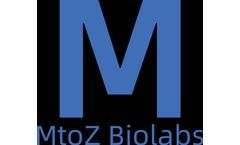Therapeutic Development Articles & Analysis: Older
50 articles found
Knockin cell line generation represents a pivotal advancement in genetic engineering, providing vital tools for biological research and therapeutic development. This process involves the integration of specific DNA sequences into precise loci within the genome, allowing scientists to explore gene function, model diseases, and develop new ...
Alfa Cytology has unveiled new services focused on therapeutic antibody development for bladder cancer research.Alfa Cytology, a prominent cancer research services supplier based in New York, proudly announces the launch of its comprehensive services for bladder cancer therapeutic antibody development. ...
Pathogenic Mechanisms: Investigating the pathogenic mechanisms employed by pathogens during infection and the corresponding host resistance mechanisms, which is essential for developing effective therapeutic strategies. Evolutionary Relationships: Studying the evolutionary relationships among different pathogen species, which can lead to the discovery of positive ...
This targeted approach can enhance the therapeutic effects of mRNA while reducing unintended interactions with non-target cells. ...
For instance, researchers can analyze how certain miRNAs contribute to tumorigenesis by restoring their levels in cancer cell lines, thereby providing insights into potential therapeutic strategies. Therapeutic Potential The therapeutic implications of miRNA mimics are vast, particularly in the context of cancer therapy. ...
Researchers can focus on experimental design and therapeutic development rather than spending substantial time generating viral vectors. ...
Investigating these aspects can pave the way for developing therapeutic strategies targeting endothelial dysfunction, ultimately aiming to improve muscle health and treat related disorders. ...
Researchers can assess cellular responses to injury and test potential therapeutic agents aimed at promoting healing or preventing scarring. Toxicology and Drug Development: HCEC-12 cells are often utilized to evaluate the cytotoxic effects of various compounds on corneal epithelium. ...
These cells possess the remarkable ability to differentiate into a variety of cell types, including cartilage, bone, and fat cells, making them invaluable for therapeutic applications. Sources and Collection The collection of Wharton’s jelly is a non-invasive process that occurs during the birth of the baby. ...
In the rapidly evolving world of biotechnology, synthetic peptides have emerged as a pivotal component with wide-ranging applications in medical research, diagnostics, and therapeutic developments. These lab-created sequences of amino acids mimic naturally occurring peptides and are instrumental in advancing scientific discoveries and pharmaceutical innovations. ...
However, issues such as drug delivery across the blood-brain barrier, tumor heterogeneity, and therapeutic resistance remain unresolved. Therefore, comprehensive drug development is pivotal in addressing these challenges and enhancing therapeutic outcomes in brain cancer treatment. ...
Boasting a high fecundity rate, rapid development, exceptional regenerative capabilities, and optical clarity during embryonic stages, Zebrafish offer an excellent platform for researchers. These traits make them the models par excellence for studying embryonic development, genetic disorders, organogenesis, and tissue regeneration. ...
Precision-Cut Lung Slices (PCLS) have emerged as a innovative ex vivo model that allows researchers to explore deep into lung physiology, disease mechanisms, and pharmacological responses. By offering a unique combination of biological complexity and controlled experimental conditions, PCLS serve as a critical bridge between the limitations of traditional in vitro cell cultures and the ...
Creative Biogene, a leading biotechnology company, has developed a series of immune receptor stable cell lines to aid researchers in their studies. ...
This concept is vital in cancer studies as it helps track the development of tumor cells from a single mutated cell. Clonality analysis is thus essential in understanding the evolution and the spread of cancerous cells in a patient's body. ...
CD BioSciences, a biotech company specializing in centrosomal study, has recently launched new services for anti-centrosome antibody development. The services help identify and track centrosomes in experiments, demonstrating the strength of anti-centrosome antibodies as a great tool for centrosome research. ...
Applications: Functional Studies: Creating knockout models to study the roles of specific cytoskeletal components. Therapeutics: Developing gene therapies for diseases caused by cytoskeletal malfunctions (e.g., certain muscular dystrophies). ·Intracellular Sensors and Biosensors Developing intracellular sensors and biosensors has ...
Ribonucleases are also gaining attention in therapeutic development, particularly in the context of RNA-based drugs. ...
Although some antibodies show superior functionality, specificity, and affinity, they may not always be ideal candidates in the actual development process. Problems with antibody stability, such as degradation, aggregation in solution or during administration, and the complexity of formulation, are all problems that need to be overcome when successfully ...
This feature is particularly advantageous for studying the effects of mutations and developing personalized therapies for genetic disorders. Unlike traditional gene editing methods that can be limited in their scope, custom mRNA production enables researchers to design precise alterations in gene expression, opening up new avenues for genetic research and ...









